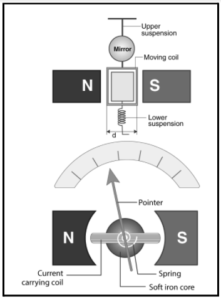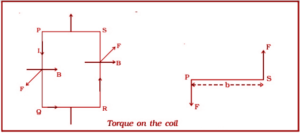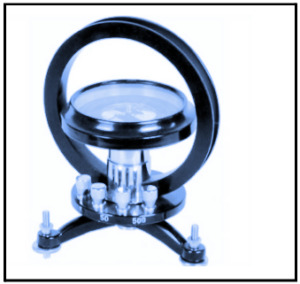Table of Contents
Introduction:
A galvanometer is a gadget that uses proper modification to measure or detect tiny currents. It can be transformed into an ammeter to measure currents in the ampere or millimetre range, or a microammeter to measure microampere current. They’ve been used to calculate modest amounts of electric current as the main device.
Galvanometers were crucial in the advancement of technology and in a variety of professions. For example, submarine cables facilitated a wide range of discussions in the 1800s, including the first transatlantic telegraph connections, and they continue to do so today. Galvanometers have also been used to display additions of other types of analogue metres (e.g., mild metres and VU metres) by capturing the outputs of the sensors on those metres.
The D’Arsonval/Weston type is still the most common galvanometer in use today. Modern D’Arsonval / Weston galvanometers are constructed with a tiny wire coil that rotates in the vicinity of a permanent magnet. A tiny pointer is affixed to the coil and goes through a calibrated scale. The coil and the pointer are pulled to zero by the torsion spring. The coil creates a magnetic field when a direct current (DC) travels through it. The permanent magnet is affected by this field. The pointer is moved by the coil twists pushing against the spring.
The information about the galvanometer from various physics-related articles is available here. Galvanometer and its general concepts are important topics in physics. Students who want to flourish in physics need to be well known about galvanometers to get deep knowledge about it to do well on their exams. The general definitions, types, principles, and working are provided here to assist students in effectively understanding the respective topic. Continue to visit our website for additional physics help.
Overview:
The magnetic needle tends to turn at right angles to the conductor when an electric current flows through it, such that its direction is parallel to the lines of induction surrounding the conductor and its north pole points in the direction of the lines of induction. It can be the device that finds out and measures electric current.
A moving coil galvanometer is an electromagnetic instrument for measuring low current values. Permanent horseshoe magnets, a coil, a soft iron core, a hinged spring, a non-metallic frame, a scale, and a pointer make up this device.

Principle of Moving Coil Galvanometer
A current-carrying coil hung in a uniform magnetic field is subjected to torque. The coil rotates as a result of this. As a result, the deflection of a moving coil galvanometer’s coil is proportional to the current flowing through it.
Construction of Moving Coil Galvanometer
It is made up of a rectangular coil wound around a light metal frame with a large number of turns of thinly insulated copper wire. A fine phosphor–bronze strip from a movable torsion head suspends the coil between the pole components of a horseshoe magnet. The coil’s bottom end is attached to a phosphor bronze hairspring with only a few rotations.
The spring’s other end is attached to a binding screw. Inside the coil, an asymmetrical soft iron cylinder is put. In all of its positions, the hemispherical magnetic poles produce a radial magnetic field in which the coil’s plane is parallel to the magnetic field. To measure the deflection of the coil, a small plane mirror attached to the suspension wire, coupled with a lamp and scale setup, is employed.
Working of Moving Coil Galvanometer

Allow PQRS to be a single coil turn. The coil is energized by a current of I. The plane of the coil in a radial magnetic field is always parallel to the magnetic field. As a result, the QR and SP sides are always parallel to the field. As a result, they are not subjected to any force. The PQ and RS sides are always parallel to the field.
The force on RS is,
F = BI (RS) = BIl
This force acts inwards and is parallel to the coil’s plane. The coil is deflected by a couple of equal, oppositely directed parallel forces with separate lines of action.
Suppose, there are n turns in the coil, then the motion of the deflecting couple =nBI/-b
Thus, the moment of the deflecting couple =n BIA
When the coil deflects, the suspension wire twists. A restorative couple is installed in the wire due to its flexibility. The twist is proportional to this coupling.
Suppose, is the angular twist, then the moment of the restoring couple is Cθ, C is treated as the restoring couple per unit twist.
Now,
deflecting couple at equilibrium = restoring couple
nBIA=C
Therefore, we can write,
nBIA=C
I=(C/nBA)× θ
Here, C is considered as the torsional constant of the spring; that is, the restoring torque exerted per unit twist. One pointer connected to the spring shows the deflection on the scale.
Also read: Important Topic of Physics: Ammeter
Tangent Galvanometer
The tangent galvanometer operates on the tangent law principle. Two magnetic fields perpendicular to each other are applied to the magnetic needle. One field is formed by flowing current through the coil of the tangent galvanometer, while the other is caused by the horizontal component of the earth’s magnetic field.

Working of Tangent Galvanometer
When no current is delivered through the coil, just a horizontal component of the earth acts on the magnetic needle, causing it to remain in the north-south orientation. A magnetic field is formed by the coil when current is conducted through it. As a result, two magnetic fields at right angles to each other now act on the magnetic needle. As a result, the needle will rotate at an angle of θ.
Frequently Asked Questions (FAQs):
Question 1: What is a galvanometer?
Answer: A galvanometer is a gadget that uses proper modification to measure or detect tiny currents. It can be transformed into an ammeter to measure currents in the ampere or millimetre range, or a microammeter to measure microampere current.
Question 2: Why does the Moving Coil Galvanometer use phosphor-bronze wire for suspension?
Answer: It is known that restoring torque is τ=Cθ
Although the value of C in the phosphor-bronze wire is relatively small, a modest restoring torque is generated in the wire. That is, the Phosphor-bronze wire has a tiny couple of twists per unit twist.
Question 3: What is the relation between the sensitivity and deflection for a galvanometer?
Answer: In a little current, the sensitive galvanometer indicates a large deflection. A moving coil galvanometer is a very sensitive device. Because of this, it can detect currents in the milliampere range.






